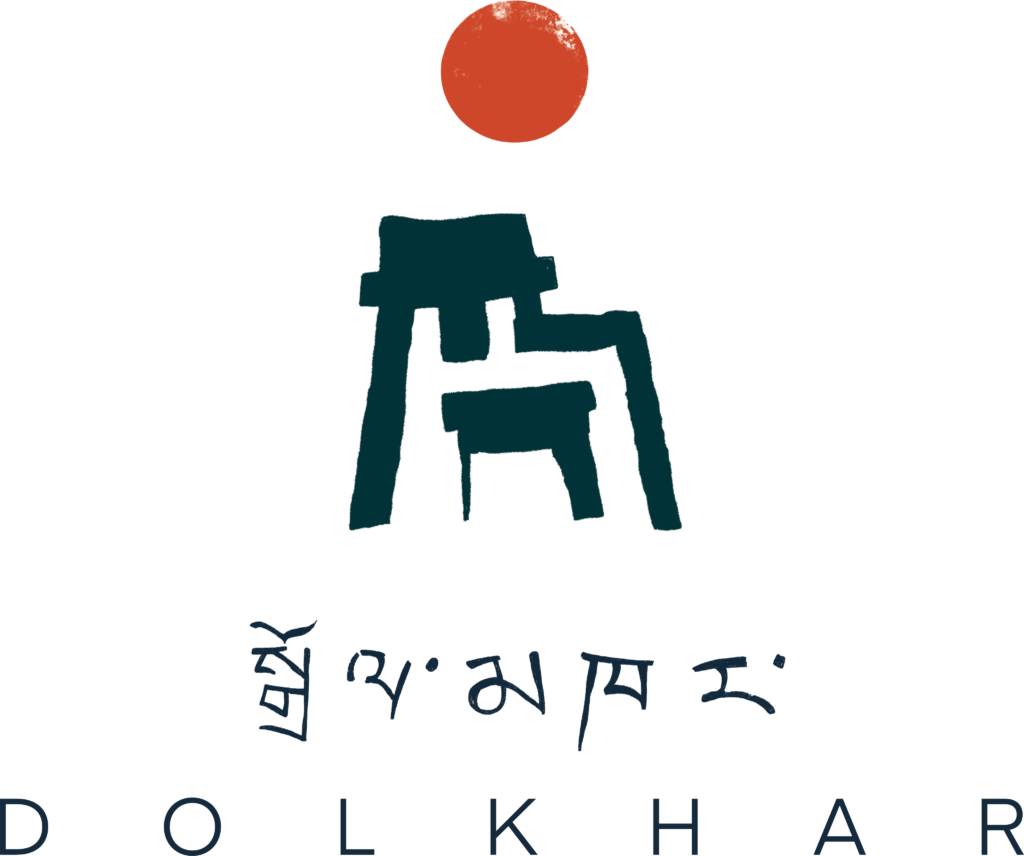The indigenous use of traditional watermills to grind the locally grown crops is unique to the Himalayan region, especially Ladakh. The watermill is known as rantak in Ladakh. People of Ladakh have been using rantak since the olden days. No history tells us the manual technique for grinding in Ladakh like the rest of the world, where most of the things in the past started manually, ranging from small to big tasks. Using rantak is a simple yet efficient way of grinding.
A tiny local house-like structure encloses the rantak. This house is made like a local ladakhi house made up of mud brick and stones. Rantak uses the flowing water of rivers or streams as a source of energy. There is a passage underground where water flows from the stream or river and is covered with flat stones known as yamangs/hyamangs. There is a conical basket for holding grain made up of chipkyang known as chepo/tsepo; It is made up of grass and willow sticks and covered with animal skin. Nowadays, conical metal is used in many places. It is attached to the ceiling of the room. For grinding, it has two big circular granite stones (doa/rdoa) with holes in the middle. The upper stone (gongdo/bu) rotates with water flow, and the lower one (yogdo/ma) is stationary. A wooden block is fixed into the hole, which turns it. The wood used is of either willow or juniper. They are supposed to be strong and are found locally. There is a wooden turbine below the stones. An iron shaft is on the peak in the form of a cross or ‘T’. It is placed in the upper (moving) stone at its centre, and the stationary stone is attached with blades made of wood known as shoqpa (wings). The bottom of the turbine sits upon a spindle that rotates upon a bowl-like structure. The spindle and bowl are made up of white marble.
Our people in the past had no proper school, yet they were brilliant when it came to invention. Similar is the case with rantak; it uses the fundamental physics principle of converting the kinetic energy of water into mechanical energy. The fast flowing water forces the turbine to rotate, which leads to the rotational motion of the grinding (upper) stone upon the stationary (lower) stone. All the materials used for rantak are locally made and locally found. The maintenance is also done by the owner of the rantak, thus saving the operation and maintenance cost. The one who owns the rantak lets the whole village use it turn wise, therefore a source of income. This eco-friendly technique of grinding using a watermill works on a renewable source of energy, thus saving the environment from pollution. The end product of the grinding, which is the flour, has many benefits compared to the ones ground in machine mills. As the stone grinding is slower and no metal is used, the flour is not exposed to high temperatures. The chances of oxidation are significantly less; thus, the flour remains fresh, and the taste remains intact for a long time without getting rotten.
To keep the indigenous techniques alive, LEDeG (Ladakh Ecological Development and Environmental Group) has made some improvisations in the traditional watermills to improve its efficiency while maintaining the method eco-friendly as it was before. The improvement is driven by enhancing various components of the traditional mill. It includes replacing the conventional wooden runner with a hydraulically better-shaped metallic runner with cup-shaped blades. This increases its operational efficiency and makes it more useful with additional machines for hulling and electricity generation etc. The improved water mills (rantak) have been developed by LEDeG for mechanical and electricity generation of 3kVa to 5kVa. LEDeG is propagating these mills for electricity generation to meet small-scale electrical requirements in the villages.
LEDeG provided the generators and improved water mills (rantak) in many villages. One such village is Panikhar, where the owner of the rantak, Mohammad Ayoub was supplied with a generator that gives electricity of 3kVa and an improvised rantak. These were given to him three years back, and he is still using them along with the old traditional rantak that is owned by his family since ages. He is highly grateful to LEDeG and the government, who helped and provided him with the generator and the new rantak. He is using both simultaneously, and if one stops working by any chance, he always has one with him, and it is also increasing the produce, thus increasing his income. With time, the stones are getting weathered and therefore are not g rinding finely. The grinding stones of the new ones are made of some material that is unknown to Mr Ayoub, so he cannot replace it himself. However, it’s still used to grind crops that don’t need to be finely ground, such as fodder. Mohammad Ayoub’s rantak works the whole summertime till water recedes and starts freezing. When it’s not used for grinding, he uses it to generate electricity, and with the help of the generator, he can light up around 15 bulbs. On asking about comparing the quantity of flour ground by the traditional and improved rantak, Mr Ayoub said both have their own qualities. However, the traditional grinding stones are huge; thus, it grinds and makes flour for four to five families a day, and the new one is small and can make flour for a family or two per day.
Rantak is a live example of our incredible past, a past we all should be proud of. Our ancestors had done their best, and now it’s our turn to keep the indigenous traditional techniques alive. The techniques are resource-efficient, and energy-efficient and such techniques are the need of the hour in this time of climate change.



